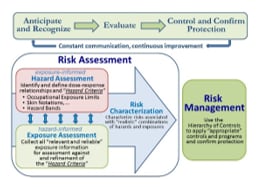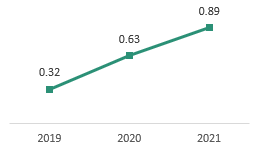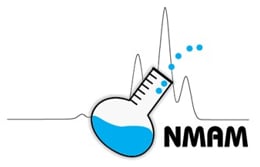Exposure Assessment Program (EXAP)
The National Institute for Occupational Safety and Health (NIOSH) Exposure Assessment Program works with partners in industry, labor, trade associations, professional organizations, and academia. The program focuses on promoting the use of 21st century exposure assessment sensors, methods, and processes to protect worker safety, health, well-being, and productivity.
- Champion the information product development on conducting exposure assessments for hazards in all types of occupational settings. Hazard-informed exposure assessments help identify who is exposed to what, how they are exposed (air, water, skin contact), and how much exposure occurs, how often, and for how long.
- Design and execute exposure assessment studies that analyze exposure data for various hazards to enable exposure-informed hazard assessments.
- Advance the development of new or improved assessment methods to ensure that exposure measurements are accurate and able to characterize hazardous agents and stressors at lower concentrations.
- Promote publication of the NIOSH Manual of Analytical Methods (NMAM) as a continuously updated compilation of validated sampling and analytical methods that are used globally for occupational exposure assessment in the industrial hygiene field and related professions.
- Completed occupational exposure studies on potentially carcinogenic chemicals that are new or increasingly used in the manufacturing sector including nanomaterials, such as carbon nanotubes, flame retardant chemicals, bisphenol A (BPA) and other plasticizers.
- Published NIOSH Science Blogs and Infographics on helping mines control silica dust, and characterizing 3-D printing emissions, that have collectively been viewed over 7,000 times.
- Developed seven new NMAM methods and chapters since 2019, including methods for polynuclear aromatic hydrocarbons in air (NMAM 5528), antineoplastic drugs on surfaces (NMAM 9212), and updated NMAM 7400 which analyzes asbestos and other fibers by phase contract microscopy.
- Developed a data collection tool to better assess and document the uptake and impacts of NIOSH exposure assessment research through a partnership with evaluation scientists at the University of Cincinnati.
- Conduct worker exposure and health assessments in manufacturing workers, service sector workers, and firefighters exposed to per- and polyfluoroalkyl substances (PFAS).
- Develop new methods and exposure assessment approaches for peracetic acid, which is a widely used antimicrobial and PFAS in stain-resistant and moisture repellent textiles, firefighting foam, medical devices, paints, and construction materials.
- Publish a new NMAM chapter on biological monitoring for chemical exposures and a chapter on surface and dermal sampling methods
- Publish an update of the NIOSH Occupational Exposure Sampling Strategy Manual.

Mention of any company or product does not constitute endorsement by the National Institute for Occupational Safety and Health, Centers for Disease Control and Prevention
The Exposure Assessment Program provides national and international leadership in the development and use of effective exposure assessment strategies and methods to prevent work-related illness and injury. This snapshot shows recent accomplishments and upcoming work.


Source: NIOSH program records
To learn more, visit
www.cdc.gov/niosh/programs/exap
July 2022

